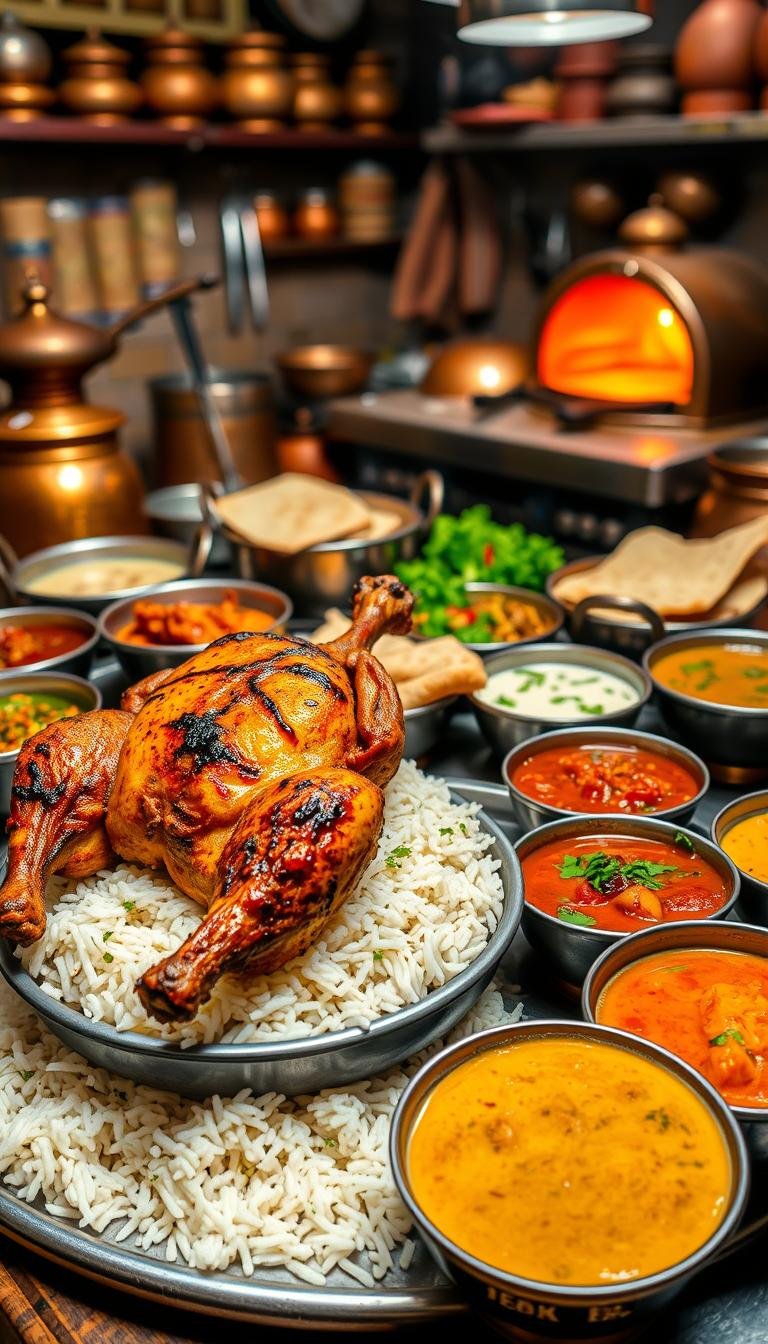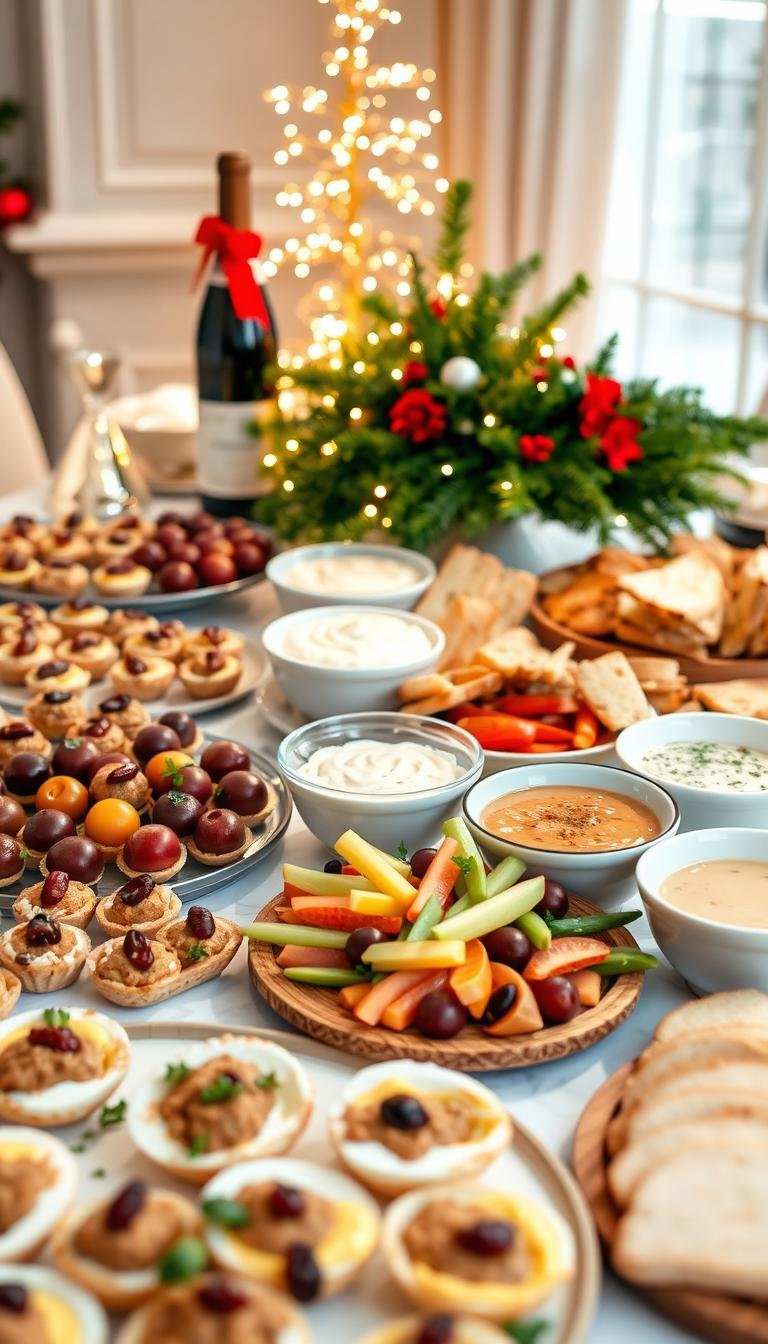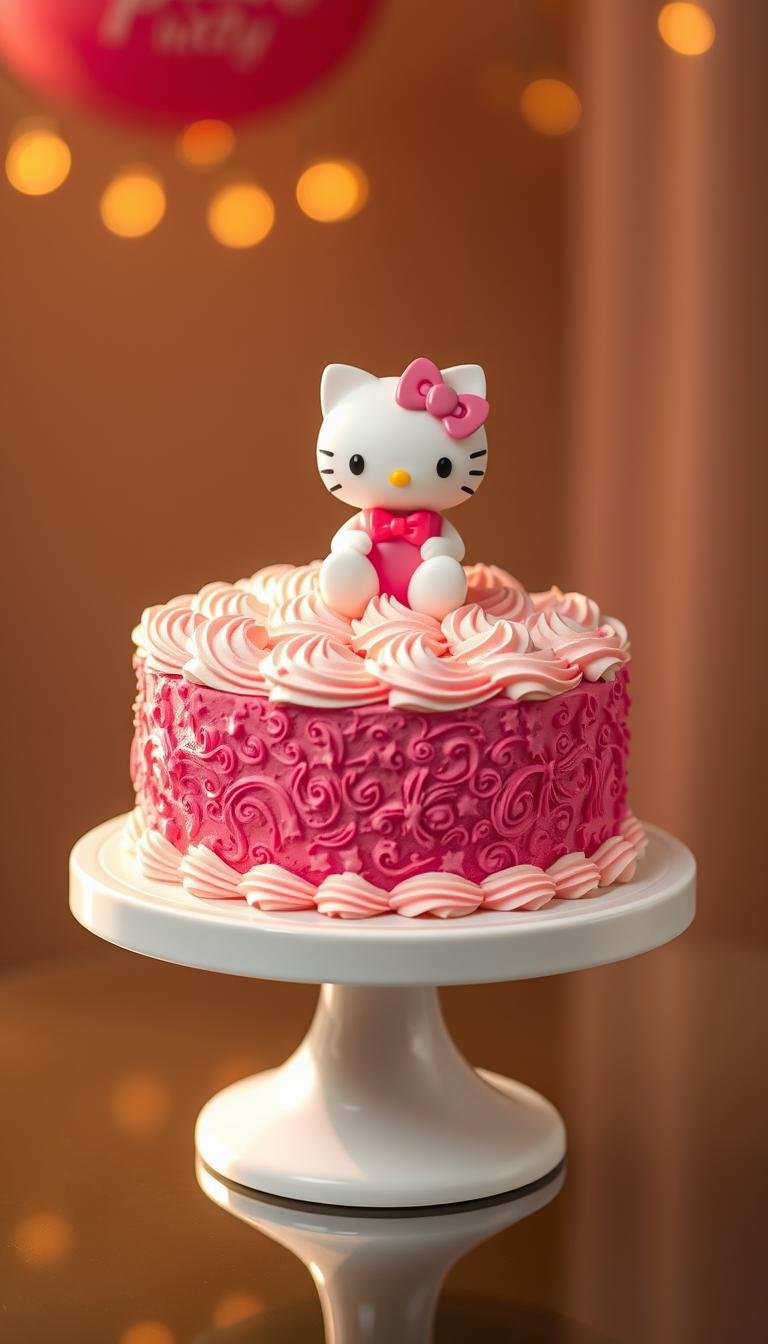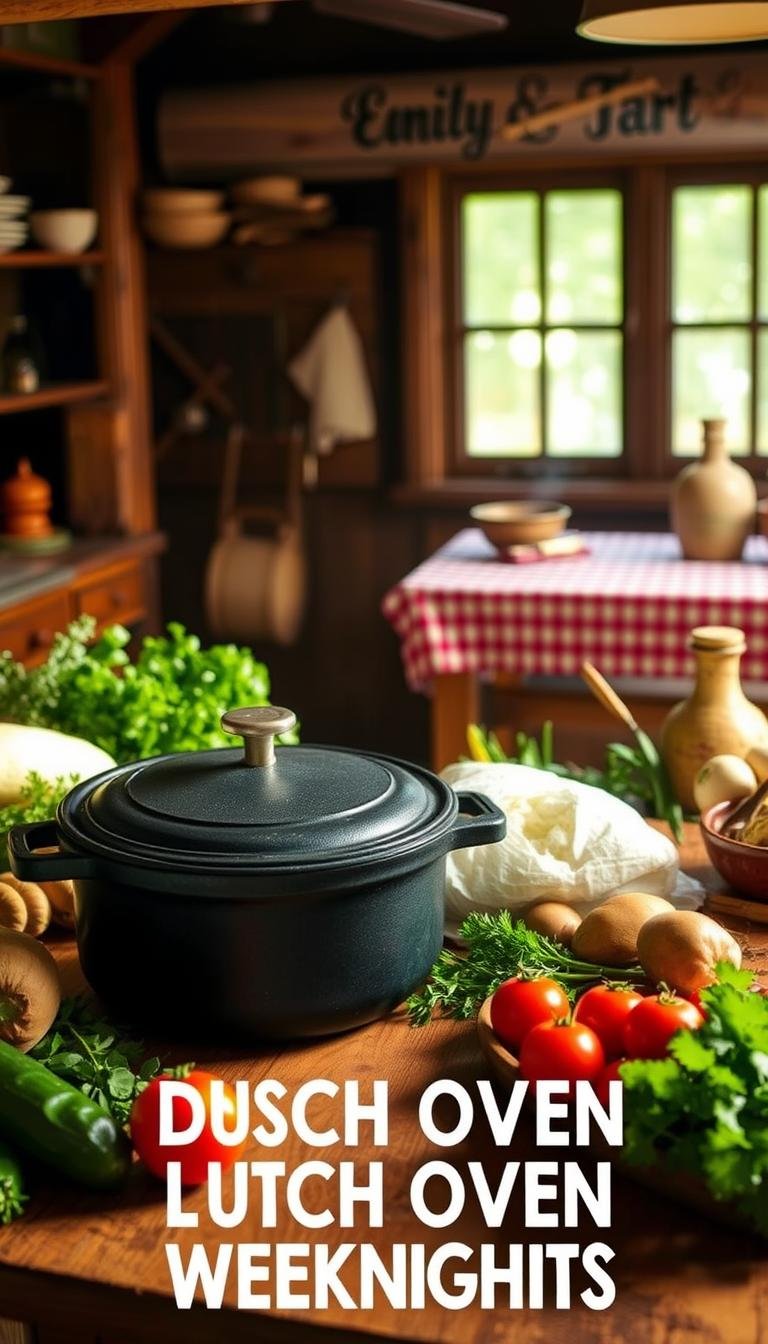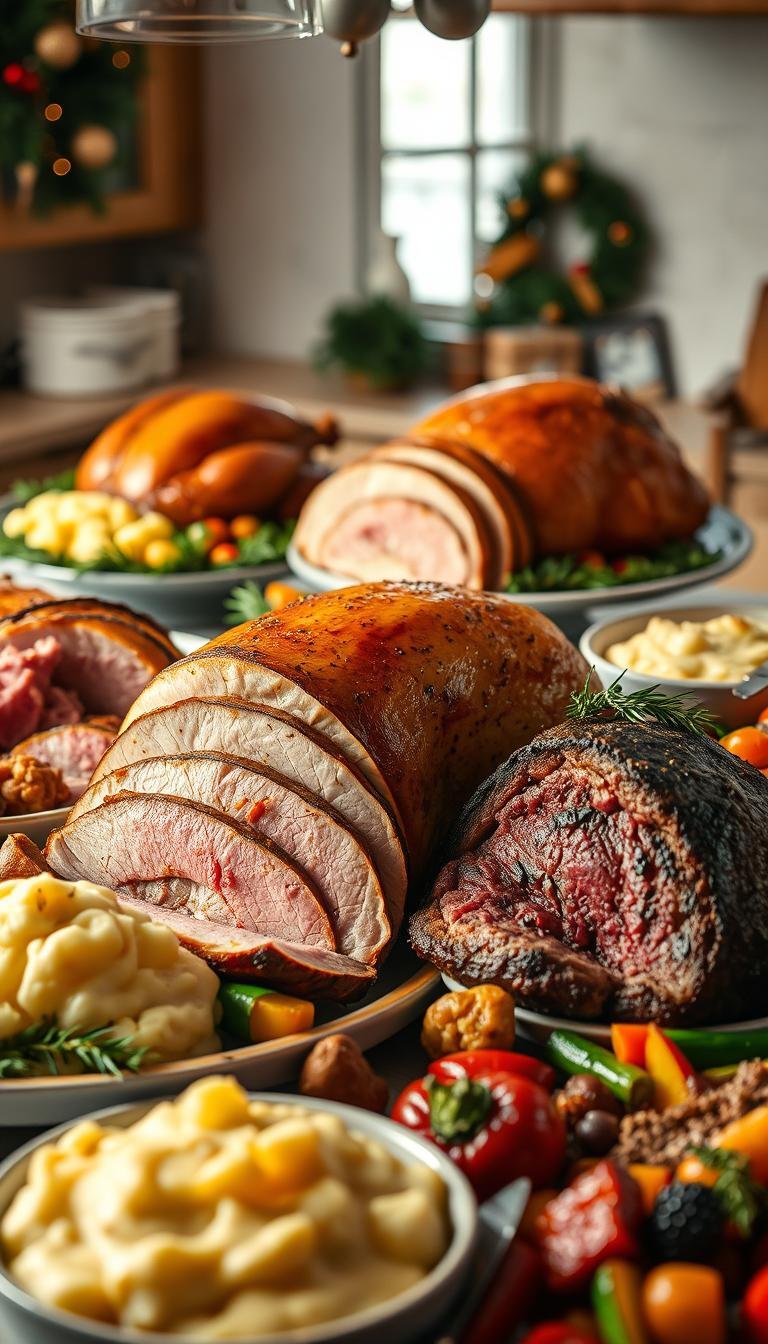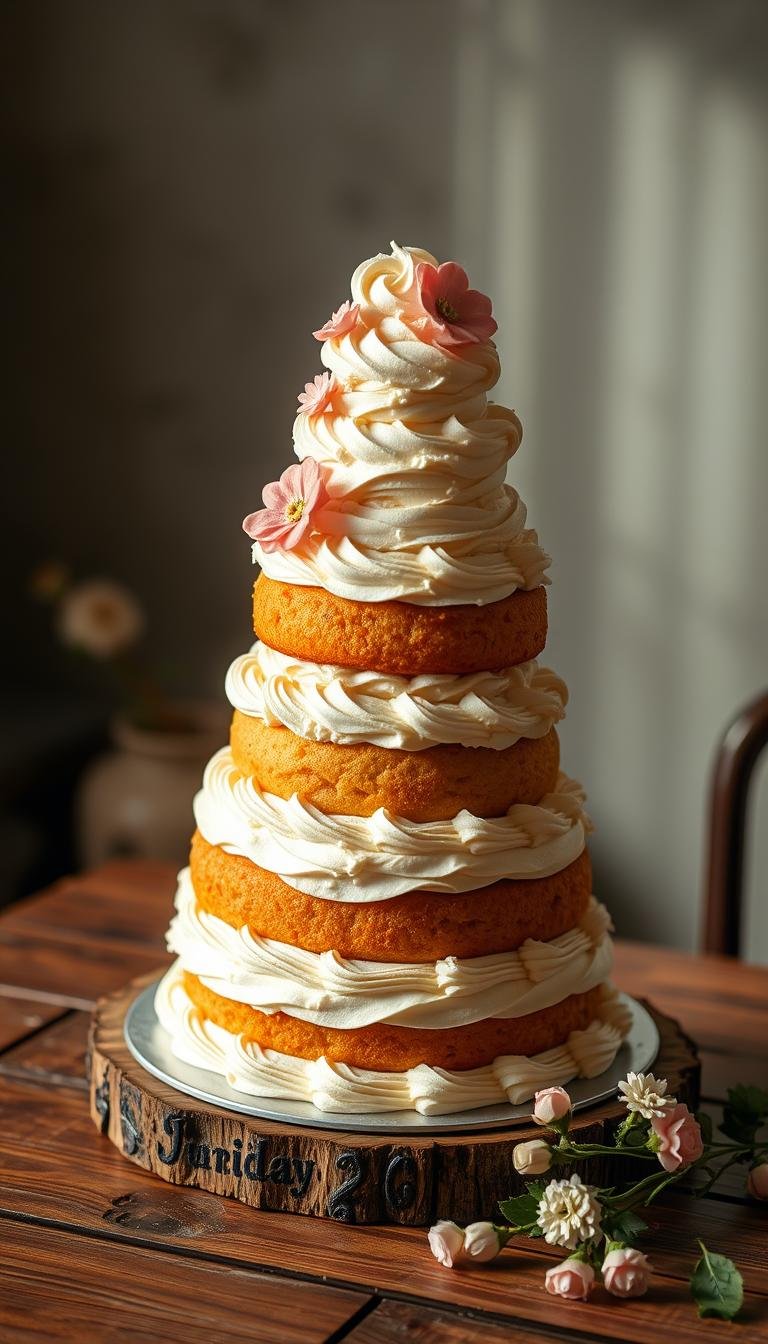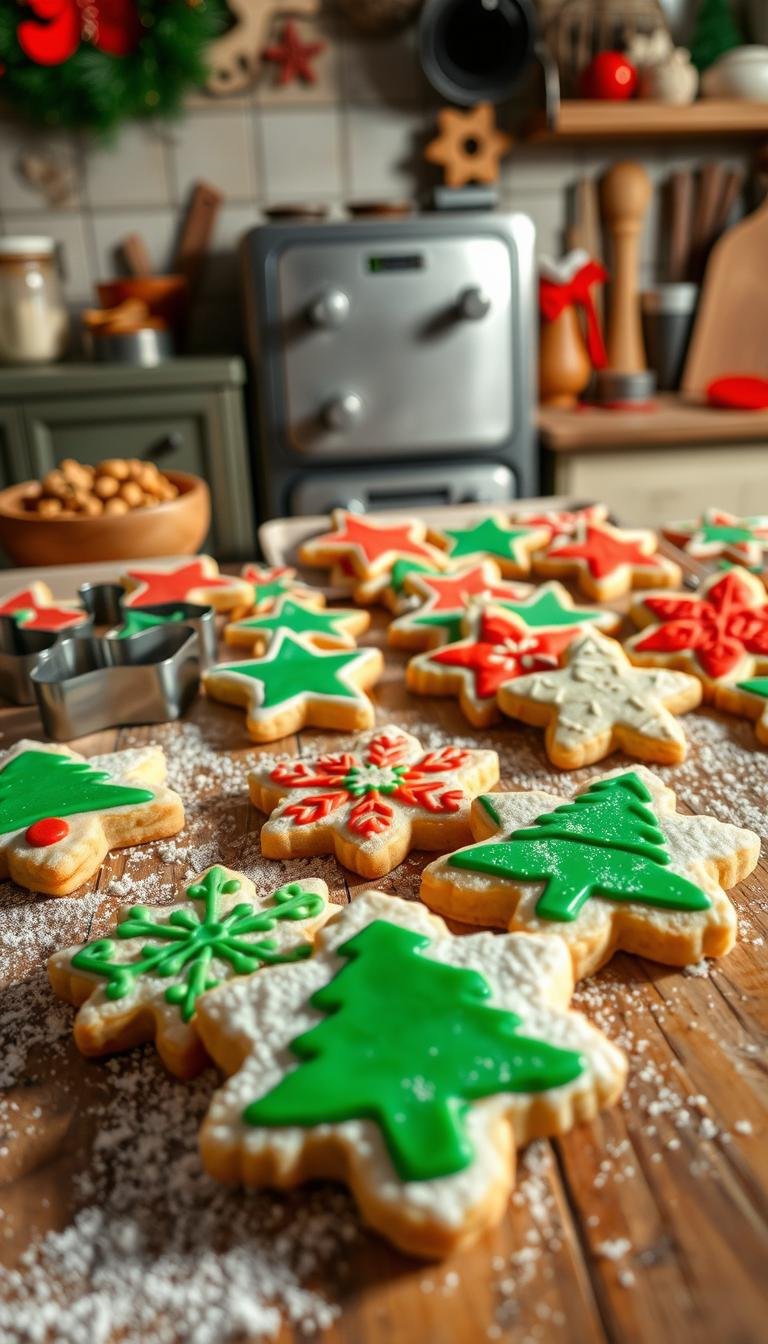Best Indian Chicken Recipes for Flavorful Meals
Surprising fact: more than one in three weeknight cooks say they want restaurant-style mains at home but lack clear timing and technique.
This guide delivers a practical roadmap. We’ll show two tested mains: a Dhaba-style curry that uses mustard oil, bone-in pieces, slow bhuno, and a final ghee-ginger-chili tadka in about 45 minutes.
The other is classic Butter Chicken (Murgh Makhani), built on grilled, marinated pieces and a smooth tomato-cashew cream base finished with kasuri methi and garam masala.
Expect clear timing cues, pantry lists for spices and dairies, and choices for stovetop, Instant Pot, oven/grill, or slow cooker so every kitchen can execute the dish well.
Practical pointers: why bone-in adds juiciness, how yogurt marination tenderizes, and tips to keep dairy from curdling when you enrich sauces.
Key Takeaways
- Two restaurant-style mains explained with timing and technique.
- Step-by-step guidance for stovetop, pressure, grill, and slow-cooker methods.
- Pantry staples and marination tips to boost tenderness and flavor.
- Clear hands-off vs active steps to plan your cooking time.
- Serving, storage, and make-ahead strategies for busy weeknights.
chicken recipes indian: What You’ll Learn and Cook
Learn precise timing, spice layering, and simple swaps so you can recreate classic restaurant flavors at home with confidence.
What this guide delivers: two tested mains with clear steps, pantry-first ordering, and method choices that let you cook without special gear.
Search intent and who this guide is for
People looking for a reliable recipe to make home flavorful mains will find step-by-step timing and spice guidance here.
This is aimed at home cooks—beginners to intermediate—who want exact minutes, ingredient lists, and doneness cues to avoid guesswork.
How this post is organized for quick cooking
- Start with pantry staples, then techniques, then full dish walkthroughs (Dhaba-style curry and Butter Chicken).
- Each method lists core steps, minutes to expect, and cues like oil separation in the masala or internal temp of 165°F for safe chicken.
- Alternatives include stovetop, Instant Pot, slow cooker, and grill with concise timing so you can pick the best tool for your time and kitchen.
“Follow the sequence—pantry, technique, then dish—and you reduce decision fatigue while getting consistent results.”
Quick note on flexibility: swap Greek yogurt for hung curd or cashews for cream without losing balance. The final sections cover serving, storage, and reheating so these dishes become repeatable weeknight favorites.
Essential Indian Pantry for Chicken: spices, oils, and aromatics that build flavor
Assemble a compact set of whole and ground aromatics, fats, and bases before you cook. A few focused staples let you recreate both a smoky Dhaba-style curry and a silky Butter Chicken with confidence.
Ground spice basics
Keep red chili powder and a milder Kashmiri option for color and control. Add turmeric, coriander, and a fresh ground garam masala to layer warmth and brightness.
Whole spices to temper
Stock cumin seeds, cardamom, cinnamon, cloves, bay leaf, and peppercorns. Tempering these in hot oil perfumes the base before you add the paste.
Fats and aromatics
Choose mustard oil for Dhaba smokiness and ghee or butter for richness. Neutral oil works for high-heat searing.
Build the masala with finely cooked onions, ginger, garlic, and green chilies, then bhuno until the oil separates.
Body, creaminess, and finishing touches
Use soaked cashews or heavy cream for a silky finish; keep thick Greek yogurt or hung curd for marinades to avoid watery runoff when searing. Dry kasuri methi and a final pinch of salt and coriander lift the sauce at the end.
“Tempering whole spices in hot oil gives a far deeper aroma than adding powders later.”
Key techniques: marination, bhuno, and final tempering for restaurant-level results
Nailing three simple techniques gives you depth without guesswork. Start with a two-stage marinade, develop the masala by bhuno, and finish with a hot tadka to lift aromas.
Marinade fundamentals
Two-stage marination works best. First toss pieces with lemon, chili, and salt so the surface seasons quickly.
Follow with thick yogurt, ginger-garlic paste, garam masala, cumin, coriander, and kasuri methi. Rest ideally 12 hours for the creamiest texture.
Bhuno (slow sauté)
Grind onion, ginger, garlic, and green chilies to a paste for the dhaba base. Cook this on low heat and stirring occasionally until the masala turns deep golden and oil separates.
Control heat so you avoid burning but still evaporate moisture. Once oil resurfaces after adding tomatoes and ground spices, you have a ready sauce to add chicken.
Signature tadka
Finish with a sizzling spoon of butter or ghee. Add julienned ginger and slit green chilies to the hot fat for an aromatic hit that cuts through richness.
| Technique | Key cue | Timing |
|---|---|---|
| Two-stage marinade | Thick yogurt absorption | Up to 12 minutes prep; 12 hours rest |
| Bhuno | Oil separates; deep golden color | 15–25 minutes on moderate heat |
| Final tadka | Sizzle + fragrant ginger | 30–60 seconds on high heat |
“Slow cooking the masala and finishing with hot fat gives a bright, layered sauce every time.”
Dhaba-Style Chicken Curry: bold, smoky, and ready under an hour
This approach focuses on a smoky base, tight timing, and simple finishing steps so you get a restaurant-level curry at home.
Why mustard oil and bone-in pieces matter
Use 1/4 cup mustard oil for that dhaba aroma; it gives a light smokiness that lifts the sauce. Choose bone-in pieces—thighs or drumsticks—for juiciness and texture during the simmer.
Onion-ginger-garlic paste and whole spice tempering
Temper cumin, roughly pounded bay leaves, cinnamon, cardamom, peppercorns, and cloves in hot oil before adding the paste. Grind 4 onions with 10 garlic cloves, 1.5 inches ginger, and green chilies to a paste and bhuno until deep golden and the oil separates.
Pressure cooker, Instant Pot, and stovetop timing at a glance
After adding chopped tomatoes, turmeric, red chili, coriander powder, and salt, add the pieces with a sprinkle of garam masala and about 1 cup water.
- Pressure cooker: high until first whistle, then low for two whistles (≈15 minutes) with natural release.
- Instant Pot: 8 minutes high pressure, quick release; simmer if you need to reduce.
- Stovetop: covered 20–25 minutes, then uncovered 10–15 minutes to thicken.
Thickening the curry: managing water and simmering
If the sauce looks thin after pressure cooking, simmer on medium to evaporate excess water until the masala clings to the pieces.
“Slow bhuno and a final butter-ghee tadka turn a good curry into a memorable one.”
Finish: add a tadka of 1 tablespoon ghee + 1 tablespoon butter with slit green chilies and julienned ginger. Let the curry rest 10–15 minutes before serving.
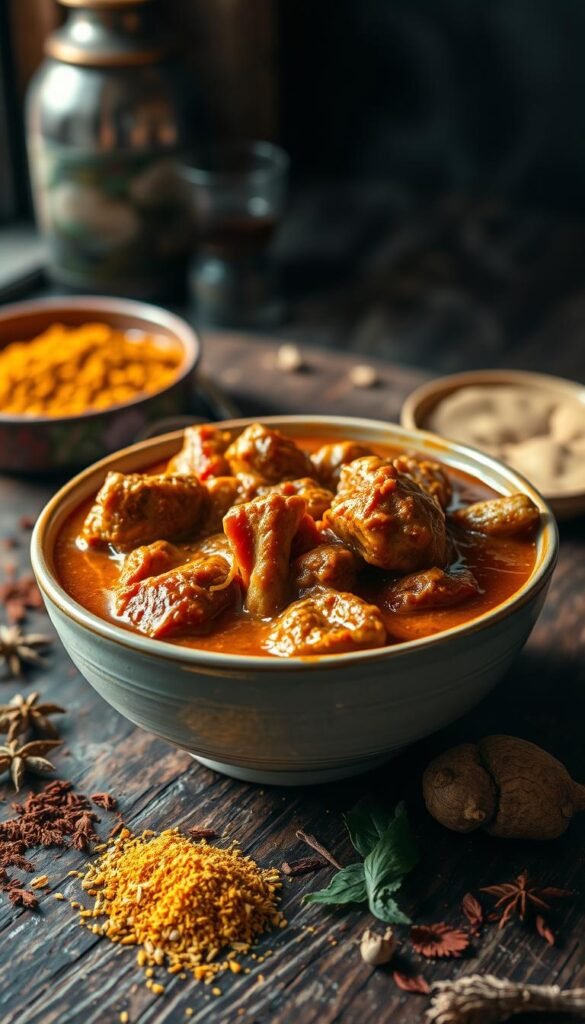
| Method | Core timing | Key cue |
|---|---|---|
| Pressure cooker | ≈15 minutes total | Two low whistles + natural release |
| Instant Pot | 8 minutes high pressure | Quick release; simmer to reduce |
| Stovetop | 30–40 minutes | Covered then uncovered reduction |
Authentic Butter Chicken (Murgh Makhani): creamy tomato gravy with grilled chicken
This lush, buttery dish pairs grilled or seared pieces with a smooth tomato-cashew finish and fragrant dried fenugreek.
Two-step marinade: First toss 500 g boneless pieces with lemon, salt, and chili for 10 minutes to season. Follow with thick Greek yogurt or hung curd, ginger-garlic paste, garam masala, ground cumin, coriander, kasuri methi, and a splash of oil.
Rest the marinated pieces 12–48 hours for best texture. If using breasts, prefer 12+ hours to keep them juicy.
Tomato base and cream options
Build the sauce with butter, a few whole spices if desired, ginger-garlic, green chili, and high-quality tomato passata or paste. Simmer until the sauce thickens and fats rise.
Use cashew cream for gentle sweetness and body or heavy cream for a rich, silky finish. Stir in kasuri methi, a pinch of sugar, salt, and a final dusting of garam masala to balance acidity.
Cook methods and a quick style note
Grill or oven-roast at 460°F for 20–22 minutes, or pan-sear in batches until lightly charred. Finish the pieces in the sauce for a gentle final simmer.
“Butter Chicken is soft, mild, and buttery; its cousin, Chicken Tikka Masala, is typically hotter and more onion-forward.”
- Marinade tip: use thick yogurt so the paste clings and the sear stays dry.
- Spice control: bloom ground spices in butter over medium heat to avoid bitterness.
- Serve with: fluffy rice, naan, or paratha to soak up the glossy sauce.
Step-by-step: Dhaba Chicken Curry made simple
Start with a short, effective marinade and then build the sauce in clear stages so timing and heat are easy to follow.
Marinate, grind, temper, and bhuno the masala
Marinate the pieces with ginger-garlic paste, lime, and salt for 20–30 minutes. This quick step adds depth and keeps the meat juicy.
Grind onions with ginger, garlic, and green chilies to a smooth paste. Keep added water minimal so the paste browns evenly.
Heat mustard oil, temper cumin and roughly pounded bay leaf, cinnamon, cardamom, peppercorns, and cloves. Add the onion paste and bhuno on steady heat until the masala turns deep golden and oil separates.
Add chicken, cup water, and cook—stirring occasionally to prevent sticking
Add chicken and a sprinkle of garam masala, roast briefly in the masala so the pieces coat evenly. Pour in exactly 1 cup water to start the simmer.
For pressure cooker: high to first whistle, then two whistles low (about 15 minutes total). Instant Pot: 8 minutes high pressure. Stovetop: cover 20–25 minutes, then uncover 10–15 to reduce, stirring occasionally.
Finish with butter-ghee tadka and coriander on top
Temper a spoon of ghee and butter with slit green chilies and julienned ginger. Pour the hot tadka over the curry and scatter chopped coriander on top.
Rest off the heat 10–15 minutes so flavors settle. Serve hot with rice or flatbread; adjust salt near the end as reduction concentrates seasoning.
“Finish with a quick butter-ghee tadka for shine and aroma, then scatter coriander on top.”
Step-by-step: Butter Chicken on stovetop, oven, grill, or Instant Pot
This practical workflow keeps timing tight so each piece finishes tender and the sauce stays silky.
Season & marinate: pat pieces dry, toss with lemon, salt, and red chili briefly. Follow with thick yogurt, ginger-garlic paste, garam masala, ground cumin, coriander, kasuri methi, and a tablespoon of oil. Rest 12–48 hours for best texture.
Seal, roast, or grill the pieces
Sear in batches on medium-high until lightly charred or roast at 460°F for 20–22 minutes. Avoid overcooking—finish tenderness in the sauce.
Build the sauce
Melt butter, optionally sizzle cinnamon, cardamom, and cloves, then add ginger and garlic briefly. Remove from heat and stir in chili powder and garam masala to protect color.
Blend tomato with soaked cashews to a smooth paste. Stir into the pan, add cup water gradually, and simmer 10–15 minutes until fats surface.
Finish and bind flavors
Transfer cooked pieces into the sauce and simmer 5–7 minutes. Add kasuri methi, a pinch of sugar, and salt. Swirl in heavy cream and an extra tablespoon of butter just before serving.
| Method | Key step | Timing |
|---|---|---|
| Stovetop | Sear then simmer in sauce | Sear 8–10 minutes; simmer 5–7 minutes |
| Oven/Grill | Roast at high heat, then finish in sauce | Roast 20–22 minutes; simmer 5–7 minutes |
| Instant Pot | Sauté sauce, pressure-cook pieces separately or combine | Sauté then 6–8 minutes pressure; quick release |
Alternative cooking methods: slow cooker and pressure options for busy nights
When weeknights are tight, set-and-forget slow cooker options give you deep flavor with almost no hands-on time.
Slow cooker Butter Chicken (low effort, max flavor): In a 6–8 qt crock, layer sliced onions on the bottom, then add bite-sized pieces, diced bell pepper, carrots, tomato sauce and paste, lemon, garlic, ginger, curry powder, garam masala, and salt. Dot the top with small pats of butter.
Cook 4.5 hours on high or 6.5 hours on low. Turn the unit off and wait 5–10 minutes before stirring in thick Greek yogurt and half-and-half to prevent curdling. This step keeps the sauce glossy and smooth.
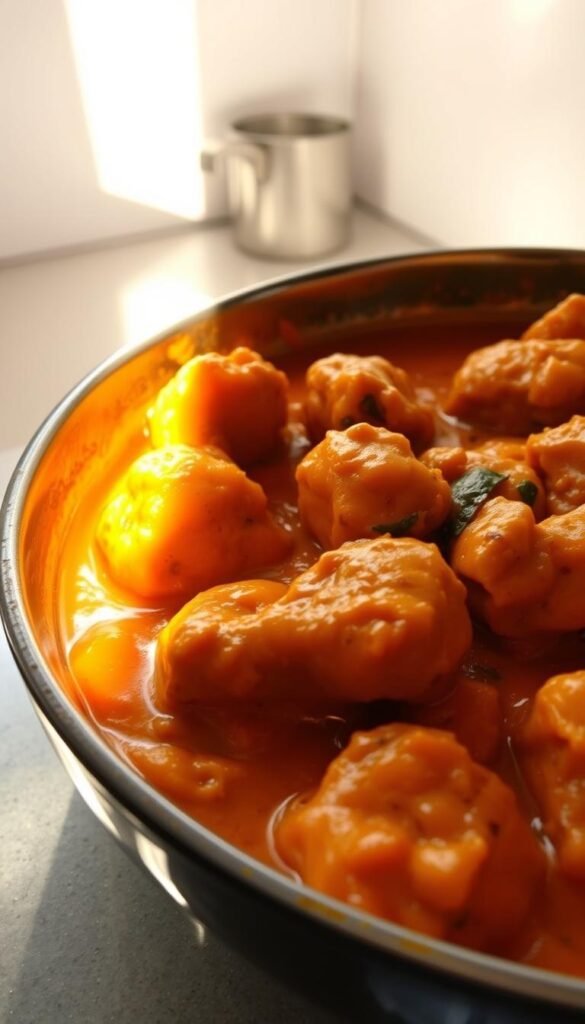
Instant Pot and pressure cooker: minutes to tender
For speed, use a pressure cooker: add a splash of water or a cup of stock so the unit seals, then pressure cook 10 minutes and quick release. Let the pot rest 10–15 minutes before stirring in dairy to avoid separation.
| Method | Core timing | Key tip |
|---|---|---|
| Slow cooker | 4.5 hr (high) / 6.5 hr (low) | Layer onions first; dot with butter |
| Instant Pot / Pressure | 10 minutes pressure + cool 10–15 minutes | Add a cup liquid; quick release; cool before dairy |
| Stovetop | Sauté then simmer ~20 minutes | Reduce to concentrate sauce after simmering |
Practical tips: Dice vegetables evenly so they stay slightly firm in the slow cooker. Pre-measure spices and chop onions a day ahead to cut active time on busy nights.
“Finish with a small butter swirl and a pinch of kasuri methi for a restaurant-like touch.”
Serving, sides, and make-ahead: rice, naan, leftovers, and freezer tips
A well-planned plate balances a warm grain, a soft flatbread, and a sharp squeeze of lime. Choose sides that either soak up sauce or cut richness so each bite tastes bright.
Best pairings: For the buttery gravy, serve basmati or jeera rice and soft naan or paratha. The dhaba-style curry pairs best with steamed rice or rotis.
Garnishes that pop
Finish with fresh herbs and crisp aromatics. Scatter chopped coriander, thin julienned ginger, and sliced green chilies on top. Add a wedge of lime for acidity and a quick crunch from pickled onions or a kachumber salad.
Storage, reheating, and freezer-friendly prep
Refrigerate leftovers up to 3 days. Freeze sauce or full dishes up to 3 months; thaw overnight in the fridge before reheating.
Reheat gently: warm over low heat and add a splash of water or a small cup of stock if the sauce tightens. Stir to re-emulsify the fat and keep the texture glossy.
| Step | Timing | Key tip |
|---|---|---|
| Short-term fridge | Up to 3 days | Portion into single-serving containers to cool fast |
| Freezer | Up to 3 months | Label with date; thaw overnight in refrigerator |
| Slow-cooker finish | 5–10 minutes rest | Add yogurt and half-and-half after turning off heat to avoid curdling |
| Last-minute make-ahead | Grill & finish: minutes | Prep sauce ahead, grill fresh pieces, then simmer together briefly |
Conclusion
The final notes focus on practical timing, measured liquids, and finishing touches that lift every sauce.
You now have two repeatable mains: one bold dhaba-style curry that relies on bhuno until the oil separates, and one silky butter-style dish made with a two-stage marinade and a smooth tomato-cashew paste. Keep staple powders like garam masala, red chili powder, and chili powder on hand to control heat and color.
Start measured with a cup water when cooking under pressure and use the Instant Pot for an 8 minutes high-pressure shortcut. Finish with a ghee-butter-ginger-green chili tadka and a sprinkle of kasuri methi so each plate shines.
Track marinade times, taste as you reduce, and note what worked. With small tweaks, these recipes will become reliable food you can make any night.
